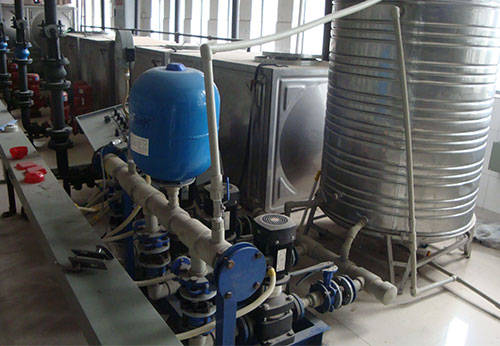The selection of butterfly valve equipment in urban water supply
Posted by Bundor valve
The models and marks of butterfly valves vary from manufacturer to manufacturer. Different models of butterfly valves have their own progressiveness.However, regardless of the size of the butterfly valve and the manufacturer, its construction principle is basically the same.The following analysis is made on the four aspects of butterfly valve material, connection mode, sealing mode and installation mode:

1.The material of butterfly valve
The materials used for different parts of butterfly valves are usually different, which provides a variety of options for butterfly valves.It is worth noting that economic factors should be considered as well as safety factors.For example, nitrile rubber (NBR) and ethylene propylene rubber (EPDM) usually need to add a variety of additives to natural rubber during production. When selecting this synthetic rubber as the sealing part of butterfly valve, the material safety must be checked.
2.The connection mode
Butterfly valves are connected in various ways, including wafer type, flange type, butt welding type, clamp, etc.In the urban water supply network system, the wafer type and flange type are the most common.The wafer type butterfly valve has simple structure and has advantages in weight and volume. It only needs to rotate 90 ° when opening and closing. It is quick to operate and has good stability. However, when the maintenance construction surface is narrow, the construction is very difficult.The flanged butterfly valve has its own flange, which only needs to be connected and fixed with the pipe flange. It has simple structure, is not affected by medium pressure, has good wear resistance of the sealing surface, and has wider application conditions than the clamp type.In specific projects, appropriate butterfly valves shall be selected according to the actual conditions of the construction site.
3.The sealing form
Butterfly valves can be divided into hard sealing butterfly valves and soft sealing butterfly valves according to different sealing forms.The soft seal butterfly valve is designed to install the rubber ring around the valve plate and contact the metal valve body. The elasticity of the rubber and the extension of the rubber after extrusion ensure good sealing performance.The sealing form of hard sealing butterfly valve is metal to metal sealing, and the elastic sealing is generated by torque.In addition, the quality of raw water will also affect the sealing of butterfly valve.For example, the water source of the Yangtze River estuary will suffer from "saltwater tide". The high content of halide in the water will cause scaling in the pipeline. The sharp edge of the scale may scratch the rubber ring during the opening and closing of the butterfly valve, affecting the normal use of the butterfly valve.
4.The installation method
The butterfly valve can be installed horizontally or vertically in the urban water supply system, and there is no difference in function between the two.When selecting the installation method, the specific analysis shall be made in combination with the butterfly valve diameter, local conditions and other conditions.

1.The material of butterfly valve
The materials used for different parts of butterfly valves are usually different, which provides a variety of options for butterfly valves.It is worth noting that economic factors should be considered as well as safety factors.For example, nitrile rubber (NBR) and ethylene propylene rubber (EPDM) usually need to add a variety of additives to natural rubber during production. When selecting this synthetic rubber as the sealing part of butterfly valve, the material safety must be checked.
2.The connection mode
Butterfly valves are connected in various ways, including wafer type, flange type, butt welding type, clamp, etc.In the urban water supply network system, the wafer type and flange type are the most common.The wafer type butterfly valve has simple structure and has advantages in weight and volume. It only needs to rotate 90 ° when opening and closing. It is quick to operate and has good stability. However, when the maintenance construction surface is narrow, the construction is very difficult.The flanged butterfly valve has its own flange, which only needs to be connected and fixed with the pipe flange. It has simple structure, is not affected by medium pressure, has good wear resistance of the sealing surface, and has wider application conditions than the clamp type.In specific projects, appropriate butterfly valves shall be selected according to the actual conditions of the construction site.
3.The sealing form
Butterfly valves can be divided into hard sealing butterfly valves and soft sealing butterfly valves according to different sealing forms.The soft seal butterfly valve is designed to install the rubber ring around the valve plate and contact the metal valve body. The elasticity of the rubber and the extension of the rubber after extrusion ensure good sealing performance.The sealing form of hard sealing butterfly valve is metal to metal sealing, and the elastic sealing is generated by torque.In addition, the quality of raw water will also affect the sealing of butterfly valve.For example, the water source of the Yangtze River estuary will suffer from "saltwater tide". The high content of halide in the water will cause scaling in the pipeline. The sharp edge of the scale may scratch the rubber ring during the opening and closing of the butterfly valve, affecting the normal use of the butterfly valve.
4.The installation method
The butterfly valve can be installed horizontally or vertically in the urban water supply system, and there is no difference in function between the two.When selecting the installation method, the specific analysis shall be made in combination with the butterfly valve diameter, local conditions and other conditions.
 简体中文
简体中文 Русский
Русский Español
Español Bundor - Butterfly, Gate, Check, Ball, Globe Valve Manufacturer, Supplier & Distributor
Bundor - Butterfly, Gate, Check, Ball, Globe Valve Manufacturer, Supplier & Distributor
